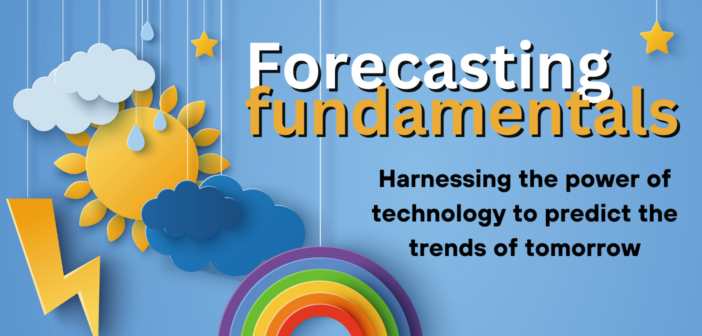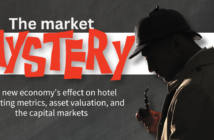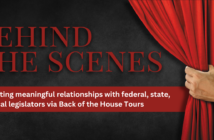Harnessing the power of technology to predict the trends of tomorrow
In hotel revenue conferencde sessions, they’re now calling it “The Taylor Swift Effect.” Earlier this year, within moments of announcing the next locations for her Eras Tour, hotel rates in the chosen cities spiked, often three or four times higher than normal for the given dates as fans rushed to secure accommodations. Behind the scenes, it was the adept combination of forward-demand-driven revenue management systems (RMSs) and their revenue director masters that let some properties swiftly (pun intended) seize the moment to ensure no income was left on the table.
While this effect, if you can even call it that, is an outlier, it speaks to the broader trend of just how unpredictable forecasting for hospitality can be in today’s era of rapidly evolving guest segments and sweeping changes to customer behavior.
For instance, at the beginning of 2023, many portended a recession on the horizon, with both FITs and business travel plateauing after the post-pandemic revenge travel was satiated during the previous year while companies were bound to tighten their wallets as they opted for videoconferencing over inperson meetings. Many of us were in this camp and, oh, how we were wrong. Leisure? Fully back to 2019 levels. Corporate? Crushing it. Groups? It might as well be the “Year of the Conference.”
Still, with full humility in not being totally on the money with these predictions, there is guidance to be had regarding how the macro-trends likely will influence travel for the year ahead. Primarily, the classical approach to forecasting both the demand side (bookings) and the supply side (necessary opex) still very much applies, but hoteliers need an added layer of flexibility that can only really be facilitated by the deployment of sophisticated, interconnected technologies.
FORECASTING FUNDAMENTALS
Before proffering any thoughts on the future, it’s critical to note the overall process to planning for next year is still very much intact, with human oversight being the visionary judicator for how to execute any strategies that will drive reservations as yielded as possible and ancillary spend, no matter how erratic the forecast-to-actual ratio becomes.
Typically, the forecast is generated internally by the sales team that develops a group budget based on known business projected on a (it’s hoped) weekly timeline along with some estimates from citywide events. Tour operators and corporate sales are also included based upon month-overmonth quotas from each key account along with other promotional activities modeling suggests will be productive.
It’s a lot of work but a relatively straightforward process. While the goal from ownership or the executive level is always to be bullish on rate, revenue on the books is still revenue, and it’s often better to lock in a slightly discounted income source than to risk empty rooms that could’ve been sold.
THE SUPPLY SIDE OF FORECASTING
While the three trends covered in this article’s accompanying sidebar speak to traveler evolutions, in hospitality, it’s always a bit of a dance between demand forecasts and keeping your supplies as efficiently allocated as possible so you simultaneously never have cost overruns due to lower-than-expected property utilization or aren’t optimizing revenue because you didn’t anticipate occupancies at that level.
On the one hand, having intelligent and automated inventory management and procurement systems will help smooth out the supply chains so you’re always in the Goldilocks zone – not too low where services may be compromised and not overstocked where you have an onerous carrying cost.
But with the biggest line item being labor, that’s where your attention should fall. An example where you can go wrong here would be an attempt to curtail housekeeping wages, which results in an inability to turn rooms around during a high-demand weekend and the hotel can’t maximize occupancy. Tighter labor costs can be achieved using the latest systems that can review past inputs from a variety of on-premises and comp set data sources to equate forecasts more precisely with actuals.
“Smaller hotels, especially owner-operated businesses, may ask “Why do I need labor management software?” Proven labor-management tools are essential because smaller properties have fewer team members in total, which means each labor error or missed optimization opportunity has a substantial negative impact on a P&L,” added Adam Glickman, VP of brand strategy at Actabl, the parent company of Hotel Effectiveness, itself a widely adopted labor-management tool.
“For properties around or under 150 rooms, using labor forecasting tools to derive reductions in turnover rates, fewer no-show shifts, and savings from unqualified overtime can easily produce big, incremental gains in total profitability. For less than the cost of a shift per week, owners can see direct productivity and overtime benefits, as well as have additional peace of mind, especially in markets with more junior and inexperienced managers working day-to-day in the business.”
Ultimately, whether there’s a slowdown in 2024 or if we keep on motoring, the macro forces are beyond your control. What is, though, should be incorporated into your plans. Know the fundamentals for how forecasting works, rethink how some of the changes in consumer behavior may continue to evolve travel, and then use the latest and greatest tech to stay as flexible as possible.

This is the fun part – suggesting how travel will progress through the course of next year, and then scrubbing the entire internet when these predictions are proven wrong. Jokes aside, the goal here is to give a wide berth for each of the following so you can plug and play with regards to how they apply to your own business model.
1. HYBRID TRAVEL
Call it bleisure, remote work, workcations, or digital nomadism – whatever the specifics, the bigger trend is there now are more tech-enabled knowledge workers than ever before, with pandemic-born policies enabling this cross-generational cohort to be more flexible with the where and when behind their given job. It behooves every hotel brand to look at strategically promoting leisure as an add-on to any business or group trip, using a combination of price incentives and frictionless merchandising technologies to accomplish this. While uptake may be relatively minor, a win is a win; finding ways to activate your bleisure travel using the latest business intelligence (BI) and RMS tools, and then incorporating this into your forecasts, will give you resilience during any purported downturn.
2. MEANINGFUL MEETINGS
Everyone thought groups were dead with the rise of Zoom and Teams. But as we soon learned, nothing replaces a great handshake. Instead, the purpose behind M&E has shifted. Gone are the road warrior, one-night-only affairs, replaced by more dynamic and experiential gatherings with a longer LOS on average. The adjective “meaningful” is a necessary component, since winning that next contract may require a justification from your sales team for how your hotel will enhance the event’s purpose. Especially given the rapid turnaround time on RFPs many group travel planners are expecting nowadays, this may seem like a burden, and yet that “how” often inscribes enhanced BEOs, more space rentals, and larger room blocks. These days, you can use best-in-breed sales and catering platforms in combination with robotic processing automation (RPA) to automate many of the rote tasks necessary to get a proposal together then itemize tasks once the deal is done.
3. CHANNEL TRANSPARENCY
With the sheer onslaught of online travel resources leisure and corporate shoppers must compare rates and brands, guests are generally more agnostic than they were before the pandemic and, in many cases, the look-to-book ratio remains agonizingly short. This is where flexibility comes in as hotels must have both a tech ecosystem and a cultural disposition that favor being nimble in responding to abrupt market changes. This is also where segmentation comes into effect, as comp sets are no longer static and can vary by guest type. For example, when it comes to groups, a downtown hotel with a conference center may be competing against other centrally located properties with spacious meeting facilities in other cities, while at the same time the leisure segment’s comp set is entirely hyperlocal. Many of the latest BI or RMS vendors can offer support in this segmented benchmarking, while there’s also an entirely new subcategory of event intelligence platforms purpose-built for this task.





